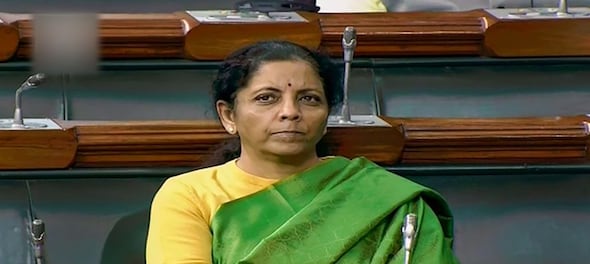
Indian economy grew by just 4.7 percent in the October - December quarter. While the rate of growth is the slowest in over six years, it’s not very disheartening because economists mostly expected this number. What is truly unnerving is that the Q1 and Q2 numbers of the current year have been revised dramatically, and what’s worse is that they have been revised out of turn, but I will come to that in a bit.
First the trends from the Q3 GDP numbers:
1.
Not counting the government sector, the growth fell to 3.6 percent. The government sector represented by public administration and defence grew by 9.7 percent. Seen from the expenditure side, government final consumption expenditure grew by 12 percent. Governments do account for a lot in command economies like India and especially so in a downturn, but a non-government sector growth of 3.6 percent must worry us.
2. Another worrying number of is the 5.2 percent fall in capex in Q3. This is a serious contraction, but then investments are lumpy and we can wait before we worry.
3. The contraction in capex is somewhat countered by the reasonable 5.8 percent growth in private final consumption. If this picks up, we may yet see capex grow, but will it?
4. Another positive is that agriculture has grown by 3.5 percent in real terms and by 13.7 percent in nominal terms. Clearly, agri inflation is helping. With a good rabi harvest predicted, rural India should gain if some of the higher food prices continues. However, not everyone agrees with this picture of improvement in rural conditions. Professor Himanshu points to the collapse in rural wages and wonders if there is much truth to the argument of improving terms of trade for agriculture. But at least some parts of rural India should be recovering , going by these GDP numbers.
Now to the worrying revision in GDP numbers.
1. Firstly why have the Q1 and Q2 numbers been revised? Heretofore revisions had been done only at the end of a year. Numbers are revised after the year is done for a variety of reasons. The quarterly figures are based on the quarterly results of listed companies. Unlisted companies don’t announce quarterly accounts. They only file annual numbers with the Registrar of Companies, after the year is done.
Also, there are several rounds of harvest arrivals. For a variety of reasons, therefore, the first revision to the annual GDP numbers come 10 months after the financial year ends. It is hence completely unusual for the Central Statistics Office (CSO) to revise the Q1 and Q2 GDP numbers while presenting the Q3 numbers.
2. What’s even more bizarre is the dramatic change in the numbers. For instance Q1 mining has been revised lower by over 6 percent. Even worse is construction which has been cut by over Rs 17,000 crores or 6 percent versus the earlier Q1 construction figure. While one can understand that the CSO is counting some items that got left out, such huge cuts are difficult to make sense of.
The Ministry of Statistics and Programme Implementation's press release gives no reasons for the premature revisions,
3. The changes in the Q2 numbers are even more shocking. On November 30, the CSO said Q2 exports were at 7.26 lakh crore. But on February 28 it said that Q2 exports were actually at 7.03 lakh crore. Where did the Rs 22,000 crore of exports vanish in three months?
The revisions are much worse when it comes to imports. In the November 30 release, the Q2 imports were put at 8.62 lakh crore. Now on Feb 28 they have been revised down to 7.8 lakh crore — almost 1 lakh crore less of imports. How come the numbers swing so wildly? What additional information did the CSO get that it has cut imports and exports for Q2 so drastically.
4. With no one able to make sense of these dramatic changes in the current year’s GDP, some economists are speculating that the CSO may have recast the Q1 and Q2 numbers only to secure a 5 percent GDP growth this year. If this guess is correct, it’s a bad sign.
Thus far we have doubted the efficiency of the CSO, but now there are worries that it may be cooking the books.
5. And finally, even the population number revisions look bizarre: When the full-year GDP numbers for FY19 were reported on May 31, 2019, the population was estimated to have grown by 1.2 percent that year. The latest press release says population in FY19 grew by only 1 percent and yet it estimates that the FY20 population will grow by 1.1 percent. Can the pace of population growth fluctuate so much? A divergence of 0.2 percent in India’s incremental population is a huge calculation error. Such revisions to the population impact the per capita income calculation, which is the actual GDP number we should be watching. The per capita GDP in FY20 is estimated to grow by a pathetic 3.9 percent.
Too much is troubling in these revisions. But the most important question the CSO and the Mospi need to answer is why were the quarterly numbers revised out of turn.
First Published: Mar 1, 2020 2:27 PM IST
Check out our in-depth Market Coverage, Business News & get real-time Stock Market Updates on CNBC-TV18. Also, Watch our channels CNBC-TV18, CNBC Awaaz and CNBC Bajar Live on-the-go!


Just 8% women candidates contested first two phases of Lok Sabha polls
Apr 29, 2024 12:00 PM
The sexual assault case against Prajwal Revanna — here's what we know so far
Apr 29, 2024 11:36 AM
Repolling underway at one polling booth in Chamarajanagar LS segment in Karnataka
Apr 29, 2024 10:32 AM

